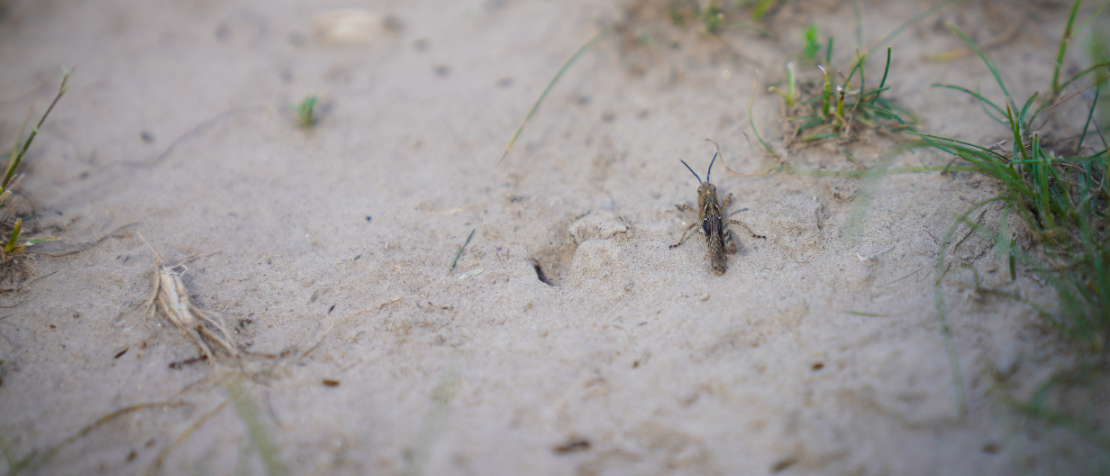Locust control can be made more sustainable, Central Asia’s agriculture ministers say

©FAO/Hashim Azizi
Budapest/Astana - Locusts and grasshoppers are serious threats to agriculture in Central Asia. Some 25 million ha of cultivated land are threatened by three of these pests – Italian, Moroccan and migratory locusts – with the potential to jeopardize the food security and livelihoods of at least 20 million people, including the most vulnerable rural populations.
Agriculture ministers from the five Central Asian countries came together at a virtual meeting today to discuss and share examples of sustainable locust management. Facilitated by the Food and Agriculture Organization of the United Nations (FAO), the meeting was the eighth annual gathering of the ministers, with Kazakhstan serving as this year’s host.
The goal of the meeting was to strengthen cross-border and long-term regional cooperation and to share experience, knowledge and lessons learned from locust campaigns. The meeting also covered advanced approaches to improving country capacities and supporting a preventive approach for better locust management and the reduction of risks related to locust outbreaks.
Participants included Azat Sultanov, Vice-Minister of Agriculture of Kazakhstan; Samat Nasirdinov, Deputy Minister of Water Management, Agriculture and Processing Industry of Kyrgyzstan; Nigina Anvari, Deputy Minister of Agriculture of Tajikistan; Charyyar Chetiev, Minister of Agriculture of Turkmenistan; and Ibrokhim Ergashev, Director General of the Agency of Plant Quarantine and Protection of Uzbekistan. Also attending were representatives of United Nations agencies, resource partners and international financial institutions, including the Japan International Cooperation Agency and the U.S. Agency for International Development.
“A key question is how to go further and ensure the continuation of regional cooperation as well as sustain early warning and early reaction and use of advanced locust control,” said Viorel Gutu, FAO Assistant Director-General and Regional Representative for Europe and Central Asia. He added that reducing the impacts of locust control on food security and livelihoods and limiting the risks to human health and the environment are key to ensuring better production and a better environment.
Locust control in Central Asia
Agricultural production systems, which are vital to Central Asian countries, are prone to disturbances from locust outbreaks and other external pressures.
Locusts, plant pests with a high capacity to multiply, can fly up to 100 km per day and settle new areas over a wide range of habitats. They can damage cereal crops, leguminous plants, sunflowers, tobacco, vineyards, vegetables, fruit orchards, cotton, rangelands and other plants common in Central Asian countries.
Due to their adaptability, locusts are becoming increasingly dangerous as the climate changes. For example, locust situations have deteriorated alongside frequent droughts towards the beginning of the twenty-first century, and outbreaks have occurred in several countries since 2006.
Currently, locust control in Central Asia is essentially chemical via the application of broad-spectrum insecticides. Most of those insecticides can have negative effects on human health and non-target organisms. Therefore, a shift to environmentally friendly biopesticides that kill only locusts and present minimum risks to human health and non-target organisms is essential for sustainable locust control in the region.
The ongoing FAO “Programme to improve national and regional locust management in the Caucasus and Central Asia”, which began in October 2011, has the overall objective of reducing the occurrence and intensity of locust outbreaks and minimizing the impacts of chemical control operations on human health and the environment. Within this framework, a project funded by the Japan International Cooperation Agency is being implemented in Afghanistan and the five Central Asian countries, and a second regional project funded by the United States Agency for International Development is being undertaken to benefit the countries of the Caucasus and Central Asia. Recently, building on the progress made in recent years, a side event of the Thirty-fourth Session of the Regional Conference for Europe discussed sustainable locust management in the Caucasus and Central Asia.
